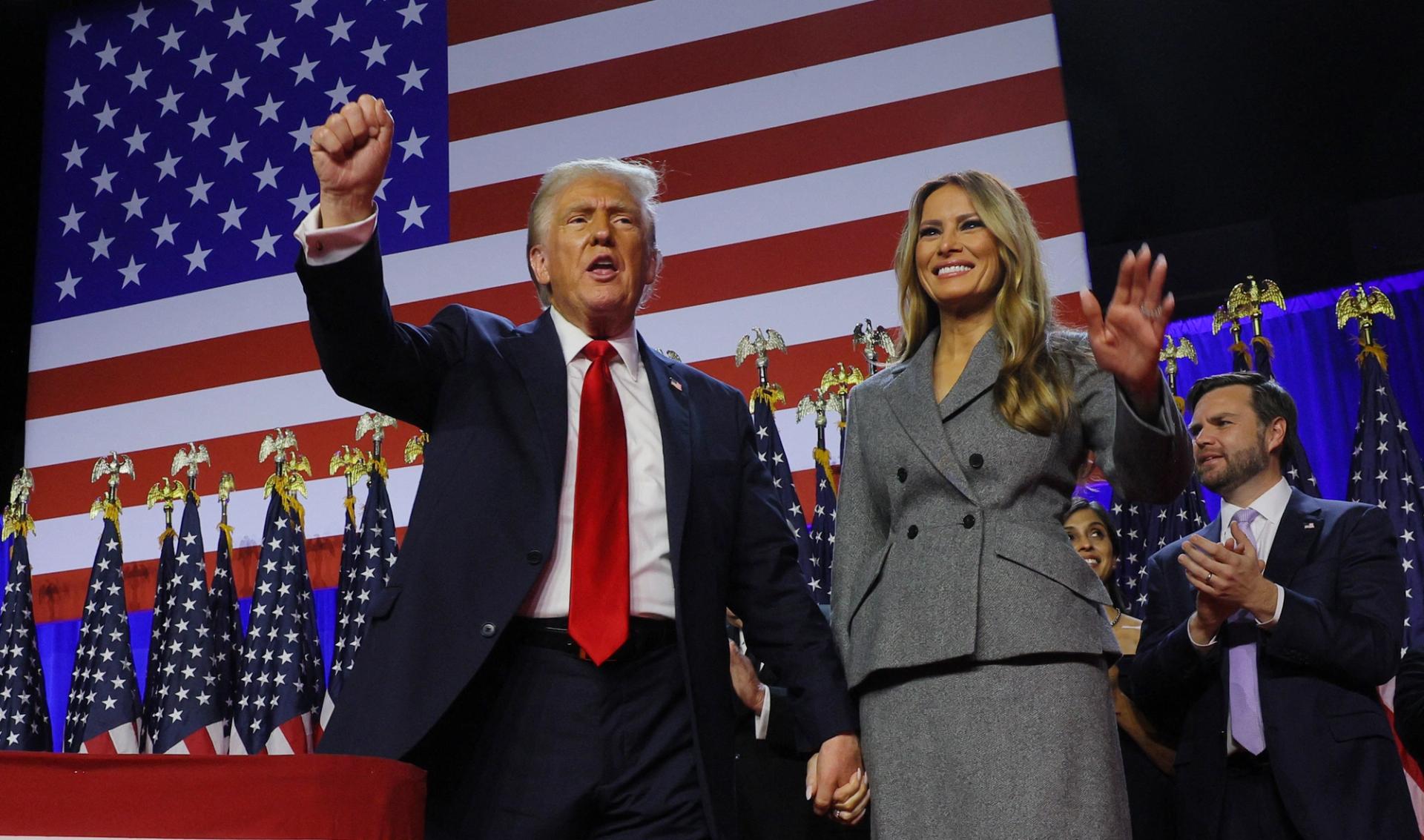The News
Donald Trump is projected to win the US presidential election, completing an improbable comeback after he previously sought to overturn his prior loss, culminating in a riot at the Capitol, and faced criminal charges.
The first president to be elected to non-consecutive terms since Grover Cleveland in 1892, Trump rode a wave of discontent over post-pandemic inflation and border crossings to victory. Across the country, in blue and red states alike, voters across a wide variety of demographics swung toward the Republican nominee — possibly giving him a national popular vote majority, something that eluded him by a wide margin even in his 2016 victory.
Initially running against President Joe Biden, he dominated their first and only debate together, prompting his opponent to drop out just weeks later. In the intervening period, Trump survived an assassination attempt in Pennsylvania and rose to his feet with a raised fist and bloodied face, an episode that boosted his personal popularity in polls. He portrayed his next Democratic opponent, Vice President Kamala Harris, as a left-wing ideologue and tied her to the Biden administration with a blizzard of speeches, interviews, social media posts, and attack ads. The campaign’s strategy also included a major bet on TV spots tying her to support for transgender surgeries for prisoners. At the same time, he navigated a difficult political vulnerability in abortion, pledging to not pursue a national ban after the justices he appointed overturned Roe v. Wade.
Voters shrugged off, among other legal challenges, his conviction in New York over hush money payments, as well as ongoing indictments and court activity around his efforts to block Biden’s victory and his possession of classified documents after leaving office. Trump now has a chance to regain control of the Justice Department, where he’s already pledged to fire the special counsel assigned to his federal cases, Jack Smith. An election interference case in Georgia is stuck in a procedural sand trap, while he faces sentencing in his New York case later this month — any kind of prison time seems especially unlikely now.
In some ways, Trump takes office in an enviable position: A growing economy with low inflation, low unemployment, and falling interest rates that’s largely moved past the disruption of the pandemic. But he also has an ambitious agenda that many economists worry could raise prices: A blanket tariff of up to 20% and a large slate of proposed tax cuts that, in addition to renewing expiring portions of his own 2017 tax law, could increase deficits and add to inflationary pressure.
On immigration, Trump has promised to invoke the 1798 Alien Enemies Act to round up transnational gang members and to pursue “mass deportation” against undocumented immigrants. Accomplishing his goals may be difficult, however, as there are major legal, logistical, and funding obstacles to cutting off new asylum seekers and deporting existing immigrants.
In the final days of the race, some of his key supporters began talking up an ambitious slate of their own. Elon Musk would like to cut $2 trillion in annual spending, a sum that would require deep across-the-board cuts, while anti-vaccine activist Robert F. Kennedy Jr. boasted about an expected major role that he would use to eliminate fluoridated water.
On foreign policy, Trump’s to-do list will also include the ongoing war in Ukraine, where he’s been critical of US support but has not outlined a clear alternative plan, and in Israel and the Middle East, where he similarly has been vague about his preferred response. His planned tariffs, should he follow through, will be a point of contention with allies and rivals alike.
Benjy’s view
In Trump’s prior elections, the story was about a divided country moving in two directions — with a more diverse and educated urban and suburban America running up against a whiter rural America that felt left behind. In 2016, the trends narrowly netted out to a Republican victory, in 2020, they largely continued but favored Democrats. This election looks different: Trump appeared to make uniform gains in red states, blue states, and swing states alike, expanding on his rural gains, putting a ceiling on recent suburban losses, and even making inroads in ultra-Democratic cities like New York and Chicago. Exit polls will take time to sort out, but showed him making significant gains with nonwhite voters, who have been the core of the Democratic coalition for decades, and younger voters, who they have long seen as leading a coalition of the future.
As Democrats look to assess what happened, it’s going to be hard to isolate any single messaging decision by their candidate or a vice presidential selection or a major event as the decisive factor. On the surface, the story instead looks like a broad and severe rejection of the incumbent White House’s record, one that resembles a backlash in similar wealthy countries whose leaders struggled with post-pandemic inflation and surging asylum claims. Two-thirds of voters rated the economy as “not so good” or “poor” in exit polls, even well after prices had stabilized from their peak and while unemployment remained low. In the run-up to the election, many polls showed voters retroactively rated Trump’s presidency as a success — even as some of the same respondents said they disliked him personally.
Trump, never popular to this point, will have a chance to prove to voters again he can be trusted as a bulwark of stability after voters rejected him as overly chaotic once before. Democrats, now in the wilderness, will have to reconsider what an electorate that they thought they knew wants from them next.

